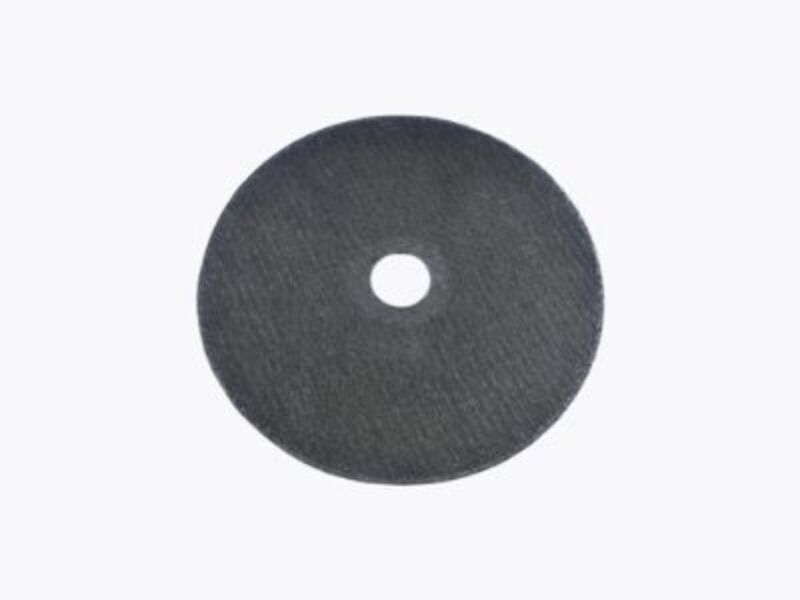
Cut-off wheels are essential tools for steel cutting, and choosing the best one can make the job easier, faster, and safer. Whether it’s aluminum oxide or zirconia alumina, there are a variety of cut-off wheels on the market that will suit any application. It is important to consider the type of metal being cut as well as the thickness of the wheel when making your selection. Different bonds may also provide different benefits depending on what best suits your needs. This article will provide the information you need to make an informed choice.
What Are Cut-Off Wheels?
Cut-off wheels are crafted with materials such as aluminum oxide, silicon carbide, or zirconia alumina to create a small and thin circular blade. These blades can be used with handheld tools like angle grinders, die grinders, and rotary tools to cut through different surfaces including metal, stone, concrete, and ceramics.

Cut-off wheels, otherwise known as cutting wheels, differ from grinding wheels in terms of purpose and construction. Grinding wheels are abrasive in order to scrape away large chunks of material on a workpiece at a shallow angle; however, cut-off or cutting wheels are usually used for precise 90-degree cuts.
Cut-off wheels are specifically made for precision cutting and come in various dimensions, thicknesses, and abrasive materials to suit diverse requirements. Their thin blades enable a precise cut that is ideal for slicing through metal sheets or pipes with elaborate designs.
Design Properties of Cut-Off Wheels
Main Types
There are two main types of cut-off wheels, a Type 1 (flat wheel), and the more specialized Type 27 (depressed center wheel).
A type 1 cut-off wheel is the ideal tool for efficient and general-purpose cutting due to its flat surface. With no depressed center, it maximizes cutting contact and minimizes interference with your workpiece. This allows you to make deep 90-degree cuts into a workpiece without sacrificing accuracy or visibility - something that can be difficult when using other types of wheels!
Although type 1 cutting wheels can slightly reduce the operator's visibility due to their straight profile and close mounting near the guard, they are incredibly beneficial in high-speed saws, stationary saws, die grinders, chop saws, and other types of grinders.
A type 27 cut-off wheel is a great choice when you need an extra level of clearance, as it features a depressed center rather than the typical flat design. Not only does this allow for increased maneuverability with constrained angles, but it is also securely held in place by a raised hub.
However, it is important to keep in mind that due to its shape, the depressed wheel may have limited cutting ability when working on corners or around extrusions and profiles.
Width
Depending upon the tool to be used, cut-off wheels are available from 1 inch to 9 inches. The smaller wheels are used with rotary tools and the mid-size wheels (4"-6") are typically used with hand-held grinders, while the larger wheels are used with table-mounted equipment.
Thickness
The thickness of a cut-off wheel for steel depends on the specific application and the type of steel being cut. As a general guideline, a thickness between 1/32" inches and 1/4" inches is commonly used for most steel-cutting applications.
Thinner wheels (1/32" to 1/8") provide a narrower cutting surface, which can be an advantage when making precision cuts or cutting through materials with intricate shapes. In addition, they typically allow for faster cutting speeds, because they generate less friction and heat during use.
Thicker wheels (1/4") are more often used on bench-mounted equipment for cutting heavier steel pieces.
Aluminum Oxide or Zirconia Alumina?
There are a variety of cut-off wheels available in the market. The best wheels for cutting steel are typically made of either aluminum oxide or zirconia alumina:
Aluminum Oxide Cut-Off Wheels
Aluminum oxide cut-off wheels are general-purpose wheels that are affordable and widely available. They are ideal for cutting mild steel, as well as other soft metals such as brass and aluminum.
Zirconia Alumina Cut-Off Wheels
Zirconia alumina cut-off wheels are more expensive than aluminum oxide wheels, but offer better performance and durability. They are ideal for cutting hard metals such as stainless steel, carbon steel, and other alloys.
Bond
The bonding agent of a cutting wheel is what keeps the abrasive grains in place. The grade, or hardness, that manufacturers refer to does not indicate the actual robustness of the abrasive material, but rather how firm the bond that holds them together is.
The softer bond of a grinding wheel not only provides faster cutting, but also reveals sharp grains more frequently. When the abrasive material wears down, it releases grains quicker to reveal fresh ones so that stronger bonds that may hold them in place after they have become worn down. This allows for an increased cut rate and overall better performance from the wheel.
For cutting wheels, resinoid bonds are one of the most widely used solutions. Made up of organic compounds, resinoid bonds exhibit superior shock resistance and can be operated at higher revolutions per minute without any issue. Perfect for cut-off applications, they also provide self-sharpening capabilities by constantly exposing new abrasive grains.
Fastener Systems Inc. has Steel Cut-Off Wheels for Every Application
At Fastener Systems Inc. (FSI), we have the best cut-off wheels for steel available to make any cutting job easier, faster, and safer. Our extensive range of products includes fasteners, caulks, hand tools, and much more.
Contact us today for more information and request a catalog!


